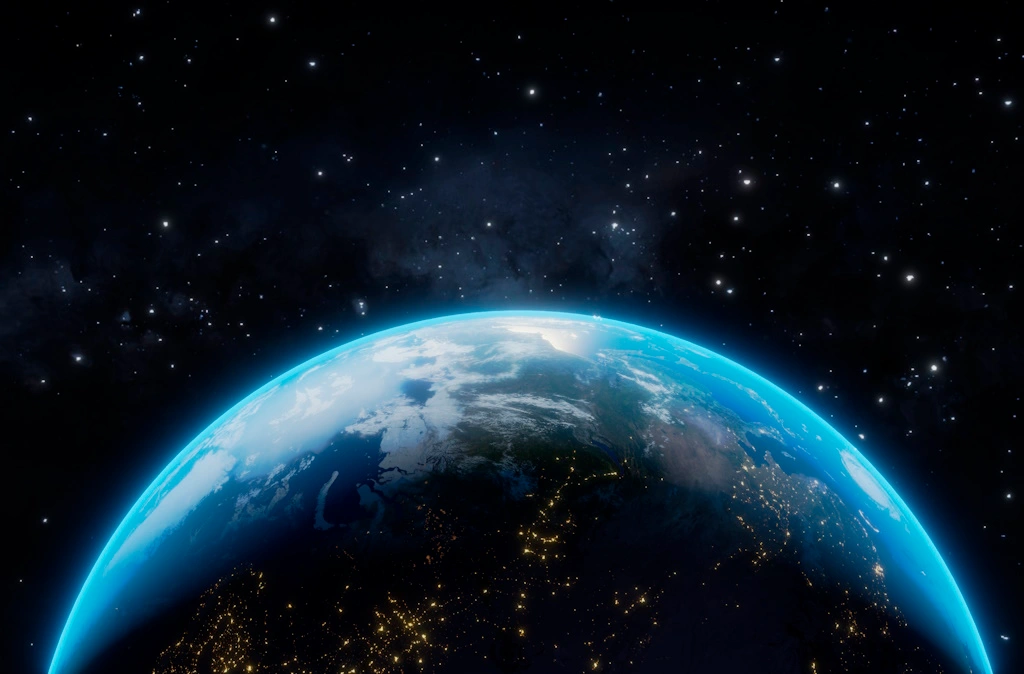Embracing the Shadow: The Enigmatic Beauty of Solar Eclipses
March 14, 2024
Science
A solar eclipse, an astronomical event that has captivated humanity throughout history, remains one of nature’s most spectacular phenomena. Occurring when the Moon passes between the Earth and the Sun, temporarily obscuring the Sun’s light, a solar eclipse is not merely a celestial event; it is a dance of cosmic shadows that highlights the intricate movements of our solar system. This blog explores the science behind solar eclipses, their types, historical significance, and how they continue to intrigue and inspire us.
The Science of Solar Eclipses
At its core, a solar eclipse is a simple alignment of celestial bodies. However, the conditions required for this alignment are remarkably precise. The Sun, about 400 times larger than the Moon, is also approximately 400 times further away from Earth than the Moon. This incredible coincidence of ratios allows the Moon to completely or partially cover the Sun from our vantage point on Earth.
There are three main types of solar eclipses:
- Total Solar Eclipse: This occurs when the Moon entirely covers the Sun, casting a shadow on Earth and turning day into a brief period of night. Observers in the path of the Moon’s umbra experience the awe-inspiring moment of totality, where the Sun’s corona, its outer atmosphere, becomes visible.
- Partial Solar Eclipse: When only a part of the Sun is obscured by the Moon, a partial solar eclipse is observed. The extent of the Sun covered varies depending on the viewer’s location.
- Annular Solar Eclipse: An annular eclipse happens when the Moon is too far from Earth to completely cover the Sun, leaving a bright, fiery ring, or “annulus,” visible around the Moon’s silhouette.

The Path of the Eclipse
Solar eclipses occur about 2 to 5 times a year, but the likelihood of witnessing an eclipse from any given location on Earth is rare. Total solar eclipses, the most sought-after by eclipse chasers, occur in any one location approximately every 375 years. The path of totality—a narrow track where the total eclipse is visible—is often only a few hundred kilometers wide and can cross vast stretches of the Earth, including oceans and uninhabited regions.
Historical and Cultural Significance
Solar eclipses have long been imbued with mythological and supernatural interpretations, often seen as omens or divine messages. Ancient civilizations, from the Babylonians and the Chinese to the Greeks and the Maya, developed sophisticated methods to predict eclipses, underscoring their importance in the cultural and scientific practices of the time.
In modern times, solar eclipses continue to fascinate and are celebrated events, bringing together people from around the world to witness this natural spectacle. They also offer unique opportunities for scientific research, such as studying the Sun’s corona, improving our understanding of solar dynamics.
Safety in Observation
Observing a solar eclipse requires caution to avoid eye damage. Looking directly at the Sun, even when it is partially covered, can result in serious eye injury. The use of specially designed solar viewing glasses or indirect viewing methods is essential for safe eclipse observation.

Embracing the Next Eclipse
With advancements in technology and accessibility of information, more people than ever can experience the wonder of solar eclipses. Websites and apps provide details on timings, visibility, and the best locations to view upcoming eclipses, making it easier for enthusiasts to plan their eclipse-chasing adventures.
As we anticipate future eclipses, these celestial events remain a powerful reminder of our place in the universe, offering moments of connection, wonder, and introspection. A solar eclipse is not just a rare astronomical occurrence; it is an invitation to pause, look up, and experience the profound beauty and transience of our existence within this vast cosmic ballet.
In embracing the shadow of a solar eclipse, we are offered a glimpse into the enigmatic and eternal dance of the heavens, a spectacle that continues to inspire awe and curiosity across the ages.
Note : The provided information may contain errors; please contact us if you notice any.

















